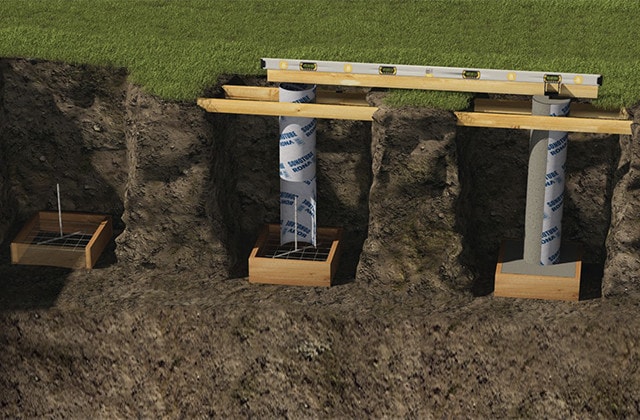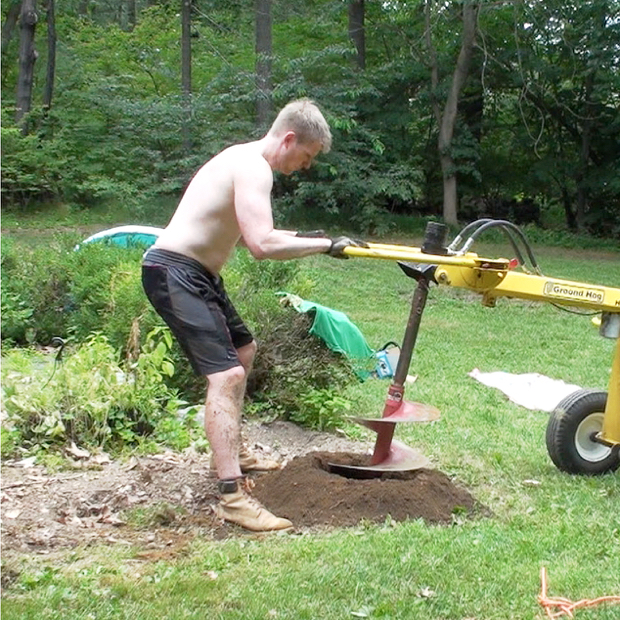Expert Tips for Installing Deck Footings to Assistance Your Outdoor Space
When it comes to constructing a deck, one of the most critical components to consider is the installment of appropriate footings. These footings are the foundation upon which your outside space will rest, giving stability and assistance for years to come. What precisely does it take to mount deck grounds correctly?
Importance of Appropriate Deck Grounds
Correct deck footings are important for making certain the security and longevity of your outside space. When creating a deck, it is vital to pay interest to the structure on which it will certainly relax. Deck grounds give the necessary support for the entire structure and assistance distribute the weight uniformly - Deck Footings. Without strong and properly set up grounds, your deck may end up being unstable, causing safety and security threats and pricey repair work.

Along with security, correct deck footings likewise contribute to the long life of your outside room (Deck Footings). Grounds that are made and built to stand up to the elements and dirt conditions in your area will help protect against the deck from shifting or working out with time. By ensuring the footings are correctly sized and mounted, you can lessen the risk of damage to the deck framework, prolonging its lifespan and minimizing the demand for costly repair work or replacements

Choosing the Right Sort Of Grounds
When selecting the proper sort of footings for your deck, it is necessary to consider variables such as dirt problems, neighborhood building ordinance, and the general layout of your exterior area. The type of footing you select will play a crucial role in ensuring the security and long life of your deck.
One common type of ground is the concrete ground. Concrete footings appropriate for the majority of dirt problems and supply outstanding support for decks. They are typically set up listed below the frost line to stop moving and clearing up due to cold and thawing cycles. One more option is helical piers, which are suitable for areas with unstable dirt or high water tables. These piers are screwed right into the ground and give solid support for the deck.
In some instances, you may require to use customized grounds, such as stack grounds or deep foundations, if you are developing a multi-level or huge deck. These footings are developed to disperse the weight of the deck over a larger location, making sure security and stopping working out or sinking.
Prior to picking a kind of ground, it is important to consult regional building codes and regulations to make sure compliance. In addition, take into consideration the layout and planned use of your exterior space. Factors such as the dimension, shape, and load-bearing requirements of your deck will influence the type of footing that is most suitable.
Preparing the Ground for Footing Installment
To appropriately prepare the ground for footing installment, it is essential to evaluate the soil problems and take necessary actions to make certain stability and durability of the deck. The initial action is to dig deep into the location where the footings will certainly be installed.
Once the location has been dug deep into, the following action is to small the dirt. This can be done using a plate compactor or by using a hand tamper. Condensing the soil assists to eliminate any kind of gaps or air pockets, which can bring about working out and instability over time.
After condensing the dirt, it is very important to lay a layer of gravel or smashed rock at the end of the excavation. This will give drainage and assistance to stop water from merging around the grounds, which can result in erosion and instability.
Step-by-Step Overview to Installing Deck Footings
After correctly preparing the ground for footing installment, the next step is to begin the process of mounting deck footings. This detailed overview will certainly supply you with a clear understanding of great post to read exactly how to set up deck grounds for your exterior space.
Figure out the area: Beginning by marking the settings of the deck footings utilizing stakes and string. Guarantee that the areas straighten with the style and format of your deck.
Dig the holes: Make use of a message opening digger or an auger to dig the holes for the footings. The depth and diameter of the openings should remain in conformity with regional structure codes and the specific demands of your deck design.
Level the openings: Utilize a degree to make certain that the holes are dug to the correct deepness and are degree with each other. (Deck Footings)
Add gravel: Location a layer of gravel at the bottom of each opening to enhance drain and protect against the wood from decomposing.
Insert the grounds: Put the footings right Home Page into the holes, making certain they are degree and plumb. Use a level and a determining tape to make sure precision.
Safeguard the footings: Put concrete right into the openings around the footings, filling them to the top. Utilize an article degree to make sure the footings remain level as the concrete sets.
Permit time for treating: Allow the concrete treatment according to the manufacturer's instructions before proceeding with the deck construction.
Typical Errors to Prevent Throughout Footing Setup
One vital element to consider throughout the installation of deck footings is staying clear of usual errors that can endanger the stability and long life of your outside space. While deck footings might look like a easy and simple component of the building process, overlooking specific elements can bring about pricey repairs and possible safety and security dangers down the line.

Additionally, overlooking to install appropriate drain procedures can create water to gather around the footings, bring about rot, decay, and the ultimate weakening of the deck's structure. Using the incorrect kind of footing product or stopping working to properly secure the footings can compromise their architectural honesty.
To prevent these blunders, it is vital to speak with a professional or comply with web link sector standards to make certain appropriate ground installation. By doing so, you can guarantee the security and long life of your exterior room, giving a safe and satisfying environment for several years to come.
Conclusion
Finally, setting up proper deck footings is important for the stability and long life of your outdoor space. By choosing the best sort of footings and properly preparing the ground, you can make certain a strong structure for your deck. Adhering to a step-by-step guide and preventing typical errors during footing installment will certainly better boost the sturdiness and security of your deck.
Correct deck footings are important for making certain the security and longevity of your outdoor area. The footings offer as a connection in between the ground and the deck, enabling the weight of the deck and its owners to be distributed uniformly into the soil.One usual type of ground is the concrete ground. Put the grounds: Put the footings right into the openings, making certain they are degree and plumb. Protect the footings: Pour concrete into the openings around the grounds, loading them to the top.